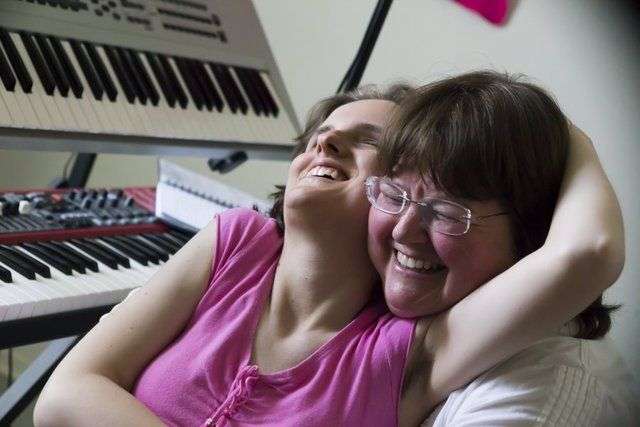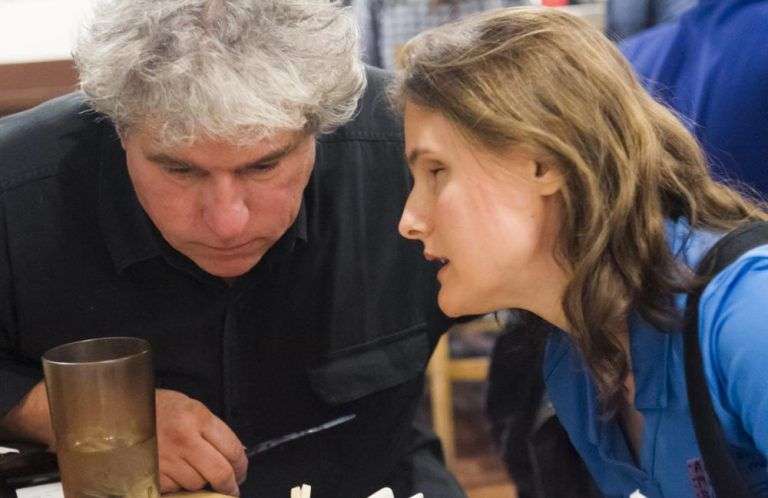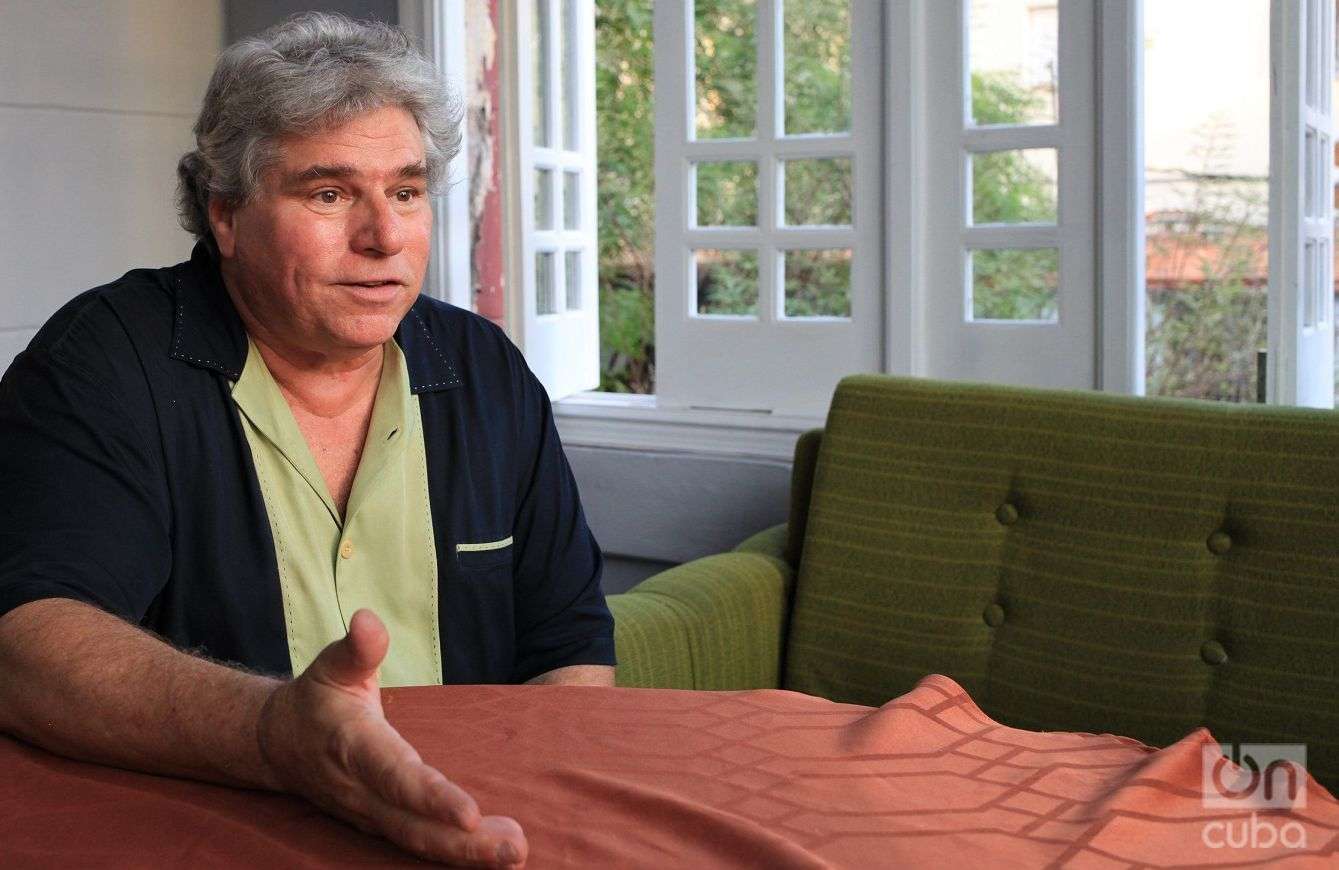California, December 1993. Rachel Flowers, the eldest daughter of musicians Jeanie and Dan Flowers, is born 15 weeks before the due time. The doctors identify a retinopathy in the premature baby girl and after some studies confirm that she will be blind.
“So much in life is visual, how will she experience it without that reference framework?” Jeanie asked herself. “Before I used to go crazy thinking about how Rachel perceived the world. I understood that she has to depend more on her other senses, on what her cane tells her and what she hears.”

Rachel cannot see. Her two ears, two perfect ears, replaced her eyes. At four she played harmonies and complete movements by Bach and Beethoven by just listening to them a few times.
“Her ear was so exquisite that it could not stand listening to something out of tune. The enjoyment of music, a gift for any child, is in her a magical, mythical victory of sound over vision,” says the father.
First it was the piano and afterwards the flute. She became a classical flutist and jazz pianist in the Music Conservatory of Southern California. The guitar, the Hawaiian ukulele, the bass and the saxophone also came later. A multi-instrumentalist, singer and composer. It is a trip no one had written about and no one knows where it’s going.
Last November she presented her first album, Listen, which included eight pieces written and arranged by her, where jazz and classical music, two of her principal influences, are mixed: “From the classical I like its structure, but jazz is how I feel music. I like improvisation, complexity, interpretative creation,” Rachel says to OnCuba.
The Jazz Plaza Festival recently presented some performances by this instrumentalist virtuosa who arrived in Cuba accompanied by filmmaker Lorenzo DeStefano, who also presented in Havana “Hearing is Believing,” a documentary about Flowers.
“First I found Rachel while checking on YouTube like many people have done, because it’s one of the places where she really is. I was searching for different versions of some LP by the British band Emerson, Lake & Palmer and all of a sudden I found one of her videos. I immediately became aware that I had seen many versions before but this one was much more than a version. Then I read the description and I realized she was blind. But I was still surprised by her interpretation, the emotion and feeling. It was as if she was the person who had written the music and had originally interpreted it,” Brian Hutchison, a piano technician in Seattle, said in the documentary.
We spoke with the director of “Hearing is Believing,” Lorenzo DeStefano, who has had a special relationship with Cuba since the 1990s when he came to the island for the first time to take photos of it from one tip to the other. Later he returned to film a documentary about Los Zafiros based on the story of two of its members and in 2016 he returned with a new musical film to present Rachel Flowers in Cuba.
When did this idea come up? How did you meet Rachel?
In January 2014 we met through a musician friend who at the time was playing with her. He told me, you have to meet this person. I went and when I heard her play I told myself, here we are again, I have no option, I will have to do another documentary. Two months later we started the filming which lasted 53 days during a period of two years.
What started off as a small story, about a small person, in a small house, in a small town, became a big story about perseverance, talent, family.

What moved you about Rachel’s story to decide to tell it in a documentary?
Her courage, having been born premature, having only her mother with her, the force of that example, her music. They were 21 months in which many private and public things happened.
It was a project I took on with the heart and which from the start did not have much of a backing, but I felt I was doing something good. Rachel is a young artist who has had rapid development but who still isn’t sufficiently well-known. The documentary’s first aim is for people to know her story and help her launch her career. We hope the film will open many doors for her.
We finished the film a short while ago and we have exhibited it in eight film festivals. I believe it will serve as inspiration for many persons who see it. Beyond music there’s something universal in the story which is the family, a day-to-day family, without luxuries, making efforts. I think that has moved people.
Tell us about that first encounter with the country in the 1990s and this other Cuba you discover now…. What particularly called your attention during this trip?
My first visit was in July 1993 with a group of U.S. people who participated in Santiago de Cuba’s Caribbean Fest. I was a photographer in my youth in Hawaii and stopped doing it to devote myself to cinema. Perhaps because I also came from an island I felt a special affinity with the Cubans and I started taking photos again during that trip, especially in Santiago de Cuba, Trinidad and Havana.
Three years later I returned to take photos and I did a tour on jeep throughout Cuba. During those eight days we found very rural areas, a very different Cuba from the one I had seen before, that’s why I focused my photos fundamentally on the people from the countryside.
Then I heard a CD by Los Zafiros and that sound from the Cuban revolutionary period seemed surprising to me. I did research and found out about two of the group’s survivors, Manuel Galván and Miguel Cancio, and with the help of Hugo Cancio I introduced myself in his family in Miami. It was a privilege that they would let me get close to such a Cuban story. We did the film and we premiered it in the Havana Film Festival.
Now I’m back with a new film. I never thought I would be so renowned in this country. I have felt the people very familiar, very open. What attracts me about Cuba now is the same as in the first trip: its people. There’s a desire to form part of a big world, and although politically speaking the future is uncertain, I believe we can build things if we maintain the connections between peoples and artists.

TN: All quotes and DeStefano’s interview were translated from the Spanish.










